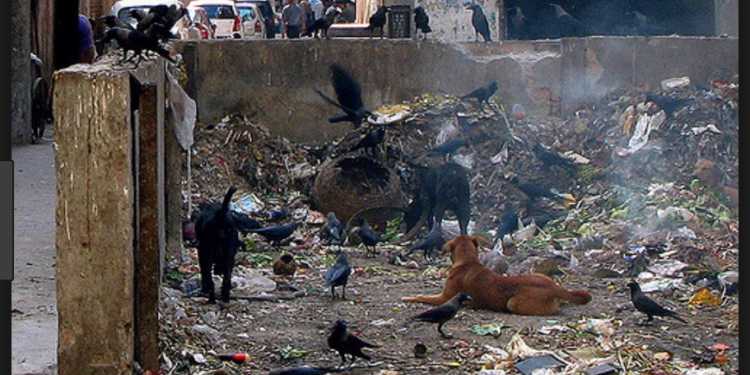Eight out of ten dirtiest cities in India are in Bengal, says Swachh Bharat Cleanliness Index, 2018.
Central Government’s Swachh Survekshan 2018 is here with a result that has surprised no one. Indore has been ranked the cleanest city in India, two years in a row. Bhopal, which comes second is also in Madhya Pradesh. But there is something in the data that will not sit well with the West Bengal government, eighteen out of twenty-five dirtiest cities of India are in West Bengal. Half of the top 50 dirtiest cities in India are also from Bengal, Bhadreswar being the dirtiest.
To add fuel, there are no earlier cleanliness records for West Bengal, as it had boycotted the survey in 2017, the only state to do so. However, in 2016, the second most populated city of Bengal—Asansol, was declared the second dirtiest city in the country, which might have inspired the TMC government to boycott Central Government’s most inspiring initiative later on in 2017.
In comparison, the dirtiest city in 2016—Dhanbad, which lies in Jharkhand about sixty kilometres west of Asansol, had climbed the ladder last year itself, placing itself a comfortable 109 out of 434 cities. This year, it has climbed the ladder to 53rd place out of 500 cities. Jharkhand, the closest neighbour to West Bengal has been placed at 1st position in the list of states, surpassing Madhya Pradesh and Maharashtra. Jharkhand was the second poorest state in India in Reserve Bank survey in 2013. For it to achieve such a remarkable feat, goes on to show how strong Raghubar Das, the Jharkhand CM is determined about completing Modi’s vision of seeing a clean India before 2022. The state capital Ranchi, is ranked 21st and all cities of Jharkhand are below 100, while none of the cities of West Bengal are below 350. Bengal’s only consolation is its 28th position on the state list, out of 29 states and 2 union territories, ahead of Nagaland, Puducherry and Tripura.
While West Bengal Principal Secretary claimed he was not aware of the survey and refused to comment. Another state minister Sovandeb Chatterjee, accused BJP of maligning the state government before 2019 Lok Sabha polls. When cities like Udaipur and Jammu have made the largest of jumps in their cleanliness rankings, the Bengal’s cities compete each other to stay the lowest in the pile.
The data clearly shows that Mamata Banerjee has failed miserably in providing able administration in the state. With TMC being in majority in the state legislative assembly, in municipal councils and corporations, as well as holding over 20,000 panchayat seats, it is quite apparent that there is no one else responsible for this another shameful achievement, which can be added to its list of failures.
Just a small walk around any city in Bengal gives you an idea of how the rankings are in fact correct. Being a resident of a city of Bengal myself, I can assuredly verify the legitimacy of the rankings.
Unfortunately for the people of Bengal, Mamata Banerjee’s inflated ego has become a hurdle not just for the development of their state, but also for the maintenance of living conditions, which gets poorer everyday. The biggest example of her inability to appreciate any good initiative by Narendra Modi is the fact that Bengal refused to be a part of the Swachh Bharat Abhiyan, it being the only state to do so. All opposition parties of BJP wholeheartedly welcomed the decision including the INC, which implements it in its ruling state in Punjab. However, Bengal refused to be a part of it.
Instead, Mamata Banerjee launched her own copy of the same mission, called Nirmal Bangla, but here is the fun part- Nirmal Bangla, quite unashamedly takes funds from the Swachh Bharat Abhiyan. The only difference is, Nirmal Bangla allows each district to set its own ridiculous deadlines. Thus, there is lesser motivation to work in comparison to Swachh Bharat, which aims to eradicate open defecation by 2019.
This means, that the TMC government has zero shame in taking funds from an acclaimed cleanliness mission without participating in it. To hide their failure, Bengal chose to be the only state to not participate in the cleanliness survey in 2017. Facing severe criticism, this time it had to participate this year. Now,the truth is out.
It is astonishing how the entire anti-Modi brigade is ready and loaded to criticise all moves of Modi, even if there is nothing to criticise, Swachh Bharat Abhiyan being an instance. In the last 3 and a half years of the Swachh Bharat Abhiyan, more than 3 crore toilets have been built. As many as 4.96 crore more households in India have toilets today, increasing from 38.7 percent back in 2014 to 69.04 percent in 2017.2.5 lakh of India’s 649,481 villages have been declared open defecation free, as found in a recent survey.
Due to lack of proper sanitation, nearly half of the people died because of diarrhoea . We needed a cleanliness drive like Swachh Bharat decades ago, but it is never too late. Swachh Bharat is a success story and a model for the underdeveloped countries. It is extraordinarily unfortunate that 10 crore people of Bengal are missing out on it due to the arrogance of a bad leader whose only focus is putting up her smiling face on every traffic hoarding and banner in the state, out of taxpayers money.


































